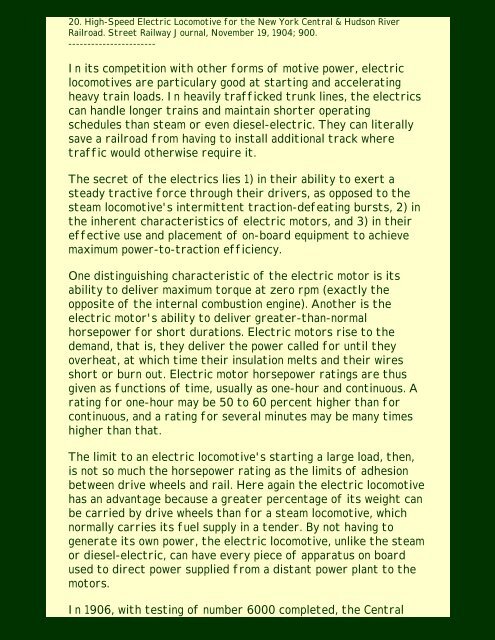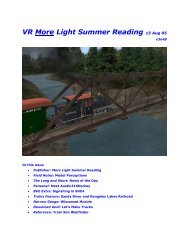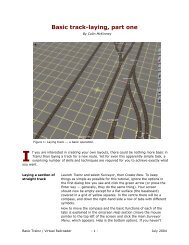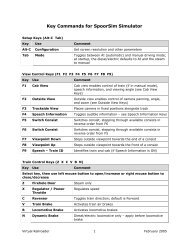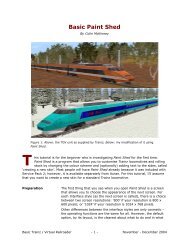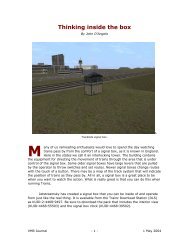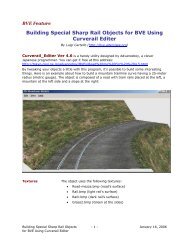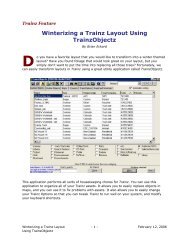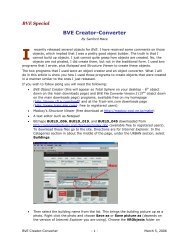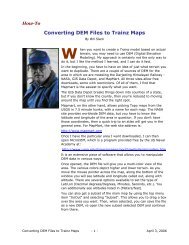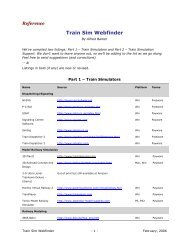Old Maude, Preface - Virtual Railroader
Old Maude, Preface - Virtual Railroader
Old Maude, Preface - Virtual Railroader
Create successful ePaper yourself
Turn your PDF publications into a flip-book with our unique Google optimized e-Paper software.
20. High-Speed Electric Locomotive for the New York Central & Hudson River<br />
Railroad. Street Railway Journal, November 19, 1904; 900.<br />
-----------------------<br />
In its competition with other forms of motive power, electric<br />
locomotives are particulary good at starting and accelerating<br />
heavy train loads. In heavily trafficked trunk lines, the electrics<br />
can handle longer trains and maintain shorter operating<br />
schedules than steam or even diesel-electric. They can literally<br />
save a railroad from having to install additional track where<br />
traffic would otherwise require it.<br />
The secret of the electrics lies 1) in their ability to exert a<br />
steady tractive force through their drivers, as opposed to the<br />
steam locomotive's intermittent traction-defeating bursts, 2) in<br />
the inherent characteristics of electric motors, and 3) in their<br />
effective use and placement of on-board equipment to achieve<br />
maximum power-to-traction efficiency.<br />
One distinguishing characteristic of the electric motor is its<br />
ability to deliver maximum torque at zero rpm (exactly the<br />
opposite of the internal combustion engine). Another is the<br />
electric motor's ability to deliver greater-than-normal<br />
horsepower for short durations. Electric motors rise to the<br />
demand, that is, they deliver the power called for until they<br />
overheat, at which time their insulation melts and their wires<br />
short or burn out. Electric motor horsepower ratings are thus<br />
given as functions of time, usually as one-hour and continuous. A<br />
rating for one-hour may be 50 to 60 percent higher than for<br />
continuous, and a rating for several minutes may be many times<br />
higher than that.<br />
The limit to an electric locomotive's starting a large load, then,<br />
is not so much the horsepower rating as the limits of adhesion<br />
between drive wheels and rail. Here again the electric locomotive<br />
has an advantage because a greater percentage of its weight can<br />
be carried by drive wheels than for a steam locomotive, which<br />
normally carries its fuel supply in a tender. By not having to<br />
generate its own power, the electric locomotive, unlike the steam<br />
or diesel-electric, can have every piece of apparatus on board<br />
used to direct power supplied from a distant power plant to the<br />
motors.<br />
In 1906, with testing of number 6000 completed, the Central


